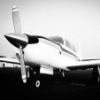AD 85\24\03
-
Members Online
- Dammit Bill
- Aerodon
- tcmb371
- Aaviationist
- Lmiller737
- DMM
- jimbgi
- MDMooney
- Keith20EH
- bluehighwayflyer
- TGreen
- Cee Jay Bee
- TCC
- Flyler
- blaine beaven
- MikeOH
- Barneyw
- Ryan ORL
- natdm
- Gee Bee Aeroproducts
- takair
- 201er
- Scott Ashton
- Bartman
- Nick G
- clh
- Greg Ellis
- Mister_Bevilaqua
- 1980Mooney
- lanejacobs84
- Ghattig
- Reek778
- Mike T
- warren.huisman
- Yetti
- Kenfen
- redbaron1982
- zehutiman
- NickG


Recommended Posts